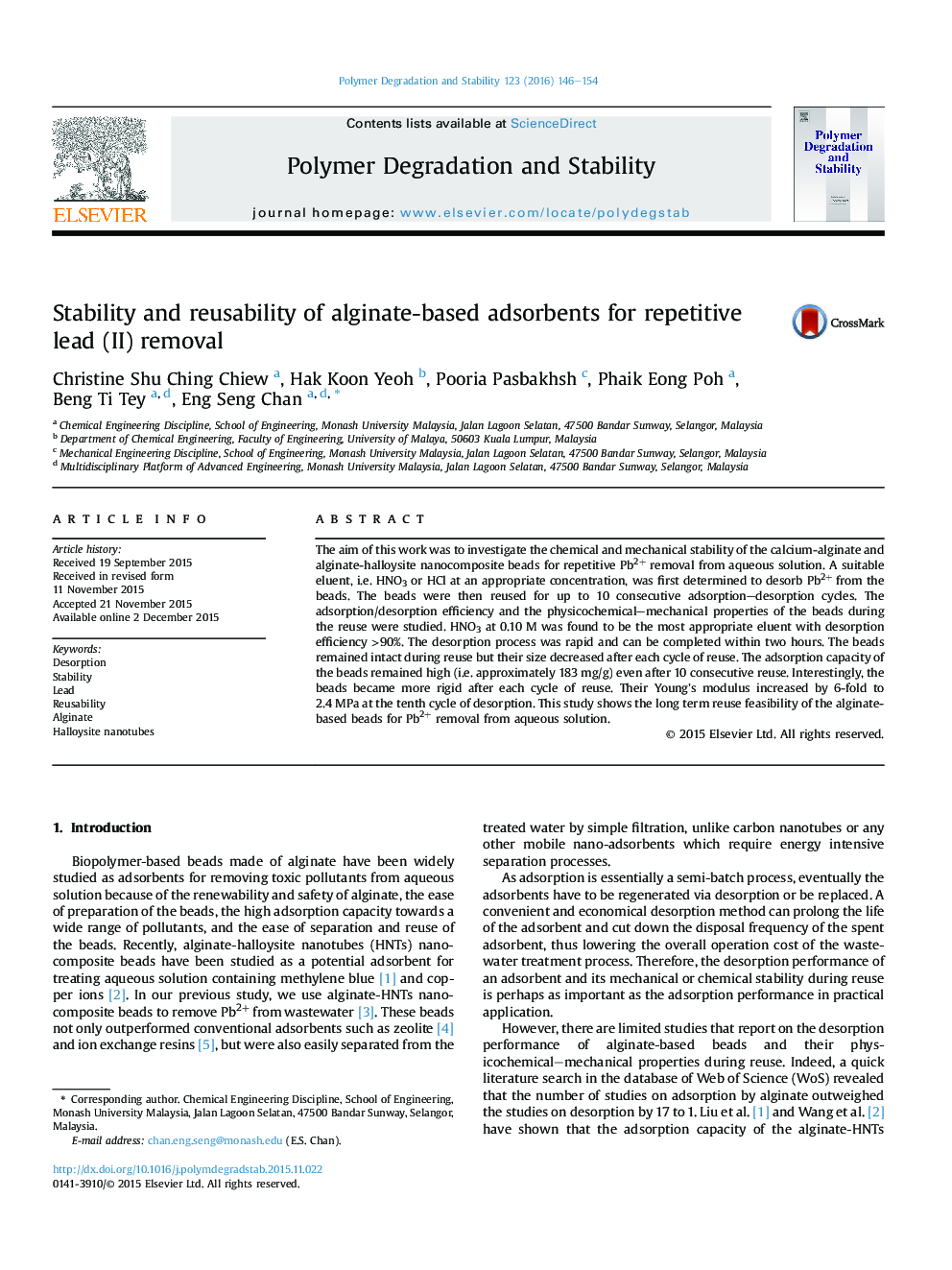| Article ID | Journal | Published Year | Pages | File Type |
|---|---|---|---|---|
| 5201244 | Polymer Degradation and Stability | 2016 | 9 Pages |
The aim of this work was to investigate the chemical and mechanical stability of the calcium-alginate and alginate-halloysite nanocomposite beads for repetitive Pb2+ removal from aqueous solution. A suitable eluent, i.e. HNO3 or HCl at an appropriate concentration, was first determined to desorb Pb2+ from the beads. The beads were then reused for up to 10 consecutive adsorption-desorption cycles. The adsorption/desorption efficiency and the physicochemical-mechanical properties of the beads during the reuse were studied. HNO3 at 0.10 M was found to be the most appropriate eluent with desorption efficiency >90%. The desorption process was rapid and can be completed within two hours. The beads remained intact during reuse but their size decreased after each cycle of reuse. The adsorption capacity of the beads remained high (i.e. approximately 183 mg/g) even after 10 consecutive reuse. Interestingly, the beads became more rigid after each cycle of reuse. Their Young's modulus increased by 6-fold to 2.4 MPa at the tenth cycle of desorption. This study shows the long term reuse feasibility of the alginate-based beads for Pb2+ removal from aqueous solution.
